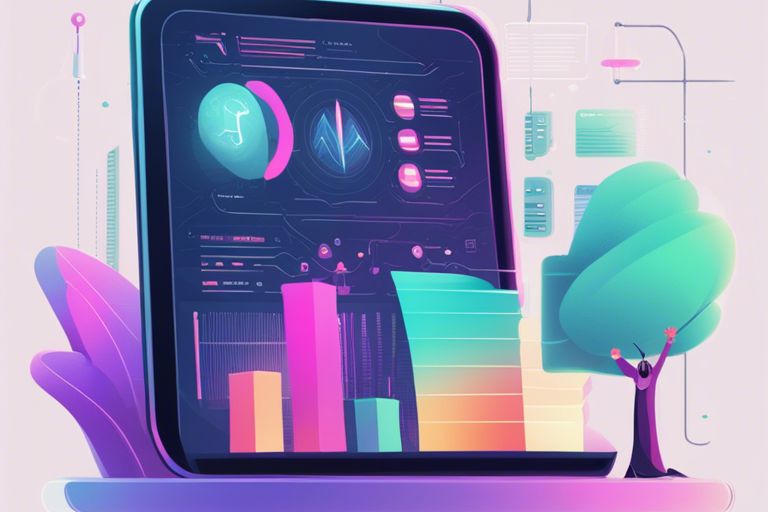
How to Build an AI-Powered Mobile App: A Step-by-Step Guide for 2024
Artificial Intelligence (AI) is revolutionizing the mobile app industry, enabling developers to create smarter, more intuitive apps that deliver personalized user experiences. If you’re wondering how to build an AI-powered mobile app, you’re in the right place. This guide will walk you through the entire process, highlighting key steps, tools, and techniques to create an intelligent app that stands out.
Why Build an AI-Powered Mobile App?
AI technology is not just a buzzword; it’s a game-changer. AI-powered mobile apps can analyze user behavior, predict preferences, automate tasks, and provide personalized recommendations. This kind of functionality can significantly boost user engagement and retention, giving your app a competitive edge.
At LogixInventor, we specialize in AI mobile app development, helping businesses leverage the power of AI to create groundbreaking mobile solutions. You can learn more about our services here.
Step 1: Define Your App’s Objective
The first step in building any successful app is to have a clear objective. Ask yourself the following questions:
- What problem does your app solve?
- Who is your target audience?
- What unique features will make your AI-powered app stand out?
Once you have clear answers, you’ll be better equipped to plan the next stages of your app development.
Step 2: Choose the Right AI Technologies
Choosing the right AI technologies for your app is crucial. Some common AI technologies used in mobile apps include:
- Natural Language Processing (NLP): For chatbots, voice recognition, and language translation.
- Machine Learning (ML): To enable your app to learn from user data and provide predictive analytics.
- Computer Vision: For image recognition, facial recognition, and augmented reality experiences.
Each technology has its use case, so make sure you align your choice with your app’s objective.
Step 3: Design the User Interface (UI)
The User Interface (UI) design is one of the most critical aspects of app development. An AI-powered mobile app should have a clean, intuitive interface that enhances user interaction. Focus on creating a design that’s easy to navigate while incorporating elements that allow users to make the most out of the AI features.
Step 4: Choose the Right Development Platform
Decide whether you want to build your app for Android, iOS, or both. Native app development ensures better performance, but it might take more time and resources. Cross-platform frameworks like Flutter or React Native can be a great choice to reach a broader audience with a single codebase.
At LogixInventor, we provide end-to-end mobile app development solutions, specializing in both native and cross-platform development. We tailor our approach to ensure that your AI-powered mobile app is efficient and scalable.
Step 5: Integrate AI APIs and Frameworks
Several AI APIs and frameworks can speed up your development process:
- TensorFlow Lite: A popular ML framework designed specifically for mobile and embedded devices.
- IBM Watson: For natural language understanding, visual recognition, and data insights.
- Google ML Kit: A toolkit that provides easy-to-use machine learning capabilities for mobile apps.
These tools allow you to leverage pre-built AI models and algorithms, reducing the time and complexity of developing your AI functionalities from scratch.
Step 6: Backend Development and Data Management
The backend of your AI-powered app is where the magic happens. It should be robust enough to handle AI processing, manage data efficiently, and support scalability. Use databases like Firebase or AWS DynamoDB for real-time data management. Ensure that your backend is optimized for quick response times, as AI-driven apps require fast data processing.
Step 7: Testing and Debugging
AI-powered apps require extensive testing to ensure that they perform as expected. Conduct thorough testing, including:
- Unit Testing: To check individual components.
- Integration Testing: To ensure different modules work well together.
- User Acceptance Testing (UAT): To validate that the app meets user requirements.
Debugging is also essential to fix any issues and improve the overall performance of the app.
Step 8: Launch and Marketing
Once your AI-powered mobile app is ready, it’s time to launch it. Submit your app to the App Store or Google Play, depending on your chosen platform. Implement a robust marketing strategy that includes app store optimization (ASO), social media promotions, and influencer collaborations to reach a broader audience.
At LogixInventor, we not only build AI-powered mobile apps but also provide strategic marketing solutions to ensure your app reaches its target audience effectively.
Step 9: Maintenance and Updates
Launching your app is just the beginning. Regular updates and maintenance are crucial to keep your app relevant in the ever-evolving world of technology. Monitor user feedback, fix bugs, and add new features to enhance user engagement.
Why Choose LogixInventor for AI Mobile App Development?
Building an AI-powered mobile app can be complex, but with the right expertise, it can be a seamless process. LogixInventor offers comprehensive AI mobile app development services, ensuring that your app is built with cutting-edge technology and industry best practices. Our team of experienced developers is committed to creating mobile apps that not only meet but exceed your expectations.
Learn more about our mobile app development services at LogixInventor.
Conclusion
Building an AI-powered mobile app is a rewarding journey that combines creativity, innovation, and technology. By following the steps outlined in this guide, you can create an app that provides an exceptional user experience and stands out in the competitive mobile app market. Partner with LogixInventor to turn your AI-powered mobile app idea into a reality.



